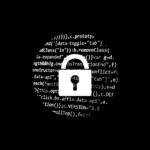Building a product that simply “works” isn’t enough in today’s fast-moving digital landscape. Modern users expect speed, reliability, and above all, security. That’s why more companies are embedding quality assurance (QA) and cybersecurity as core pillars of their software development strategies.
But for this to work effectively, it takes more than just manual testing and antivirus tools. Businesses now rely on engineering-level QA specialists and robust, proactive security practices to deliver digital products that earn user trust from day one.
Why Hiring SDET Engineers Enhances Product Stability
Traditional testing is no longer sufficient. To meet the complexity of today’s development cycles, many companies now hire SDET engineers—Software Development Engineers in Test—who combine technical skills with a quality-driven mindset to build and maintain scalable automation frameworks.
These professionals go far beyond manual testing. They write automated test cases, integrate seamlessly into agile teams, and improve coverage and efficiency across the entire development lifecycle. Whether your goal is to reduce release time or improve long-term maintainability, SDETs play a critical role in software success.
Senior and semi-senior SDETs can also contribute to leadership within QA teams, optimize CI/CD pipelines, and provide cost-effective testing solutions without sacrificing quality. Their involvement ensures that development is fast but never careless.
By hiring experienced SDETs through a flexible and reliable partner, teams can scale confidently, avoid bottlenecks, and maintain consistent quality across multiple projects.
Cybersecurity as a Built-In, Not Add-On
Meanwhile, the evolving threat landscape makes treating cybersecurity as an afterthought risky. Increasingly, companies turn to trusted partners offering cybersecurity services that are proactive, adaptive, and aligned with product architecture.
These services go beyond compliance checklists. They include infrastructure reviews, posture assessments, cloud configuration analysis, and secure software development practices—such as secure CI/CD and threat modeling—each designed to minimize risk exposure and build resilience from the ground up.
By embedding cybersecurity early in the development lifecycle, through our Secure SDLC approach, teams reduce the likelihood of costly breaches, avoid regulatory setbacks, and release safer, high-quality software. Security is no longer optional—it’s a core part of modern development.
QA + Cybersecurity = Competitive Advantage
Companies that combine embedded QA with robust cybersecurity gain a critical advantage. They ship faster, break less, and protect more—leading to higher customer satisfaction, lower long-term costs, and stronger reputations.
Whether you’re launching a fintech app, building a healthtech platform, or modernizing an enterprise system, investing in expert QA and cybersecurity talent pays off in every sprint and every release.
In a digital world where trust is currency, having SDETs and cybersecurity specialists on your team isn’t just smart—it’s essential.
→ More stories like this await on TheTimesUSA.com.








